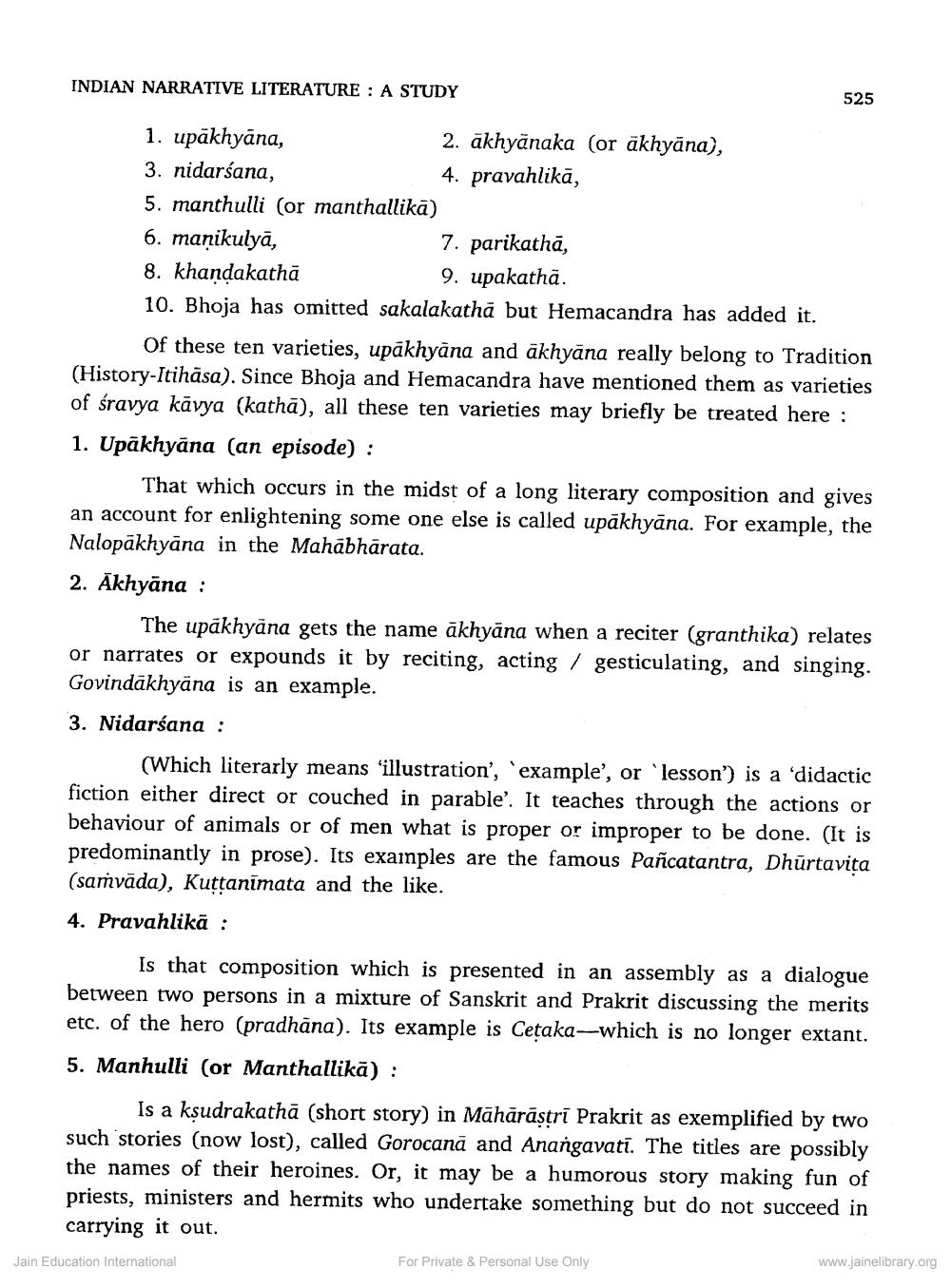________________ INDIAN NARRATIVE LITERATURE : A STUDY 525 1. upakhyana, 2. akhyanaka (or akhyana), 3. nidarsana, 4. pravahlika, 5. manthulli (or manthallika) 6. manikulya, 7. parikatha, 8. khandakatha 9. upakatha. 10. Bhoja has omitted sakalakatha but Hemacandra has added it. Of these ten varieties, upakhyana and akhyana really belong to Tradition (History-Itihasa). Since Bhoja and Hemacandra have mentioned them as varieties of sravya kavya (katha), all these ten varieties may briefly be treated here : 1. Upakhyana (an episode) : That which occurs in the midst of a long literary composition and gives an account for enlightening some one else is called upakhyana. For example, the Nalopakhyana in the Mahabharata. 2. Akhyana : The upakhyana gets the name akhyana when a reciter (granthika) relates or narrates or expounds it by reciting, acting / gesticulating, and singing. Govindakhyana is an example. 3. Nidarsana : (Which literarly means 'illustration', 'example', or 'lesson') is a 'didactic fiction either direct or couched in parable'. It teaches through the actions or behaviour of animals or of men what is proper or improper to be done. (It is predominantly in prose). Its exainples are the famous Pancatantra, Dhurtavita (samvada), Kuttanimata and the like. 4. Pravahlika : Is that composition which is presented in an assembly as a dialogue between two persons in a mixture of Sanskrit and Prakrit discussing the merits etc. of the hero (pradhana). Its example is Cetaka--which is no longer extant. 5. Manhulli (or Manthallika) : is a ksudrakatha (short story) in Maharastri Prakrit as exemplified by two such stories (now lost), called Gorocan, and Anangavati. The titles are possibly the names of their heroines. Or, it may be a humorous story making fun of priests, ministers and hermits who undertake something but do not succeed in carrying it out. For Private & Personal Use Only Jain Education International www.jainelibrary.org




